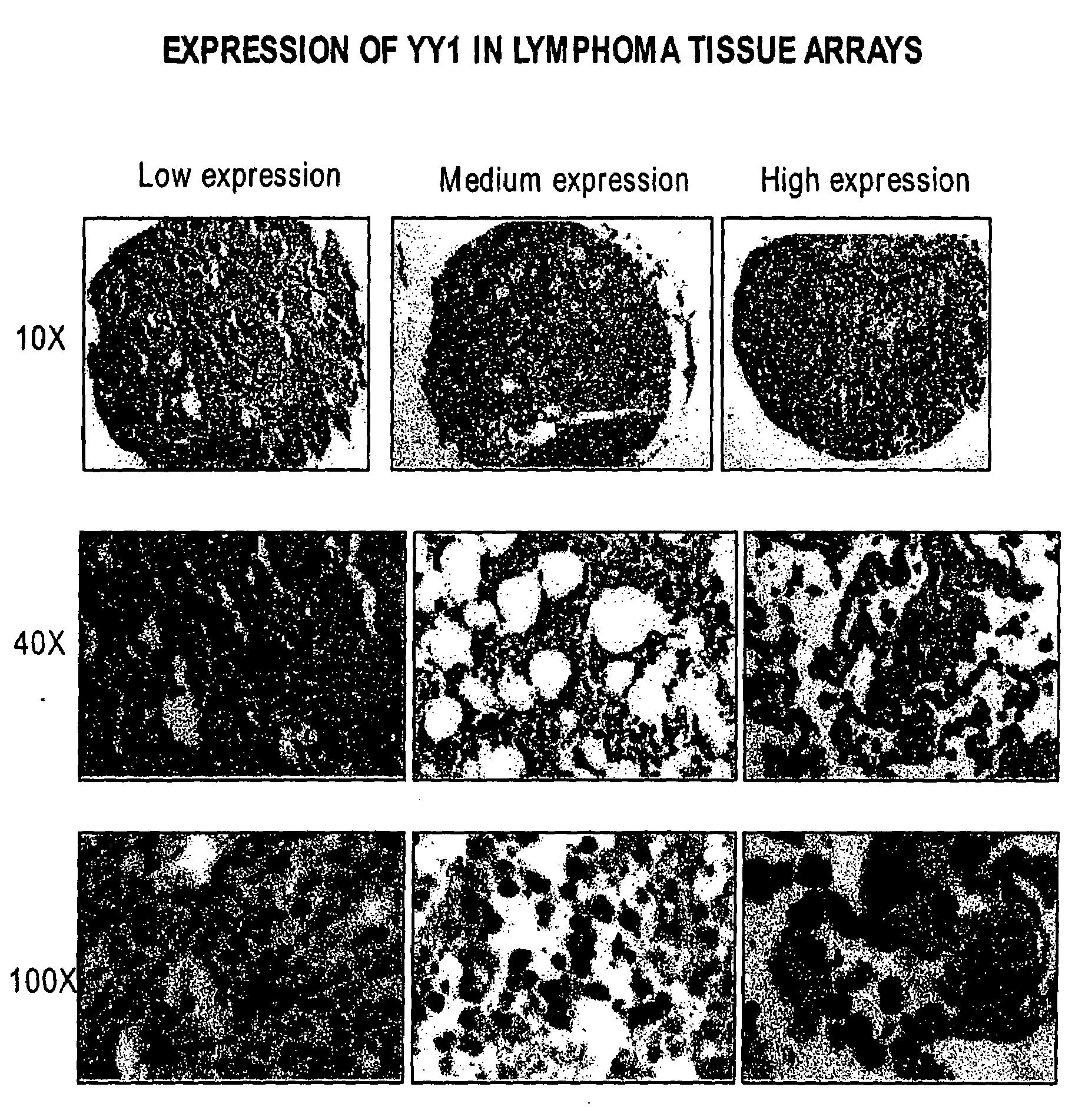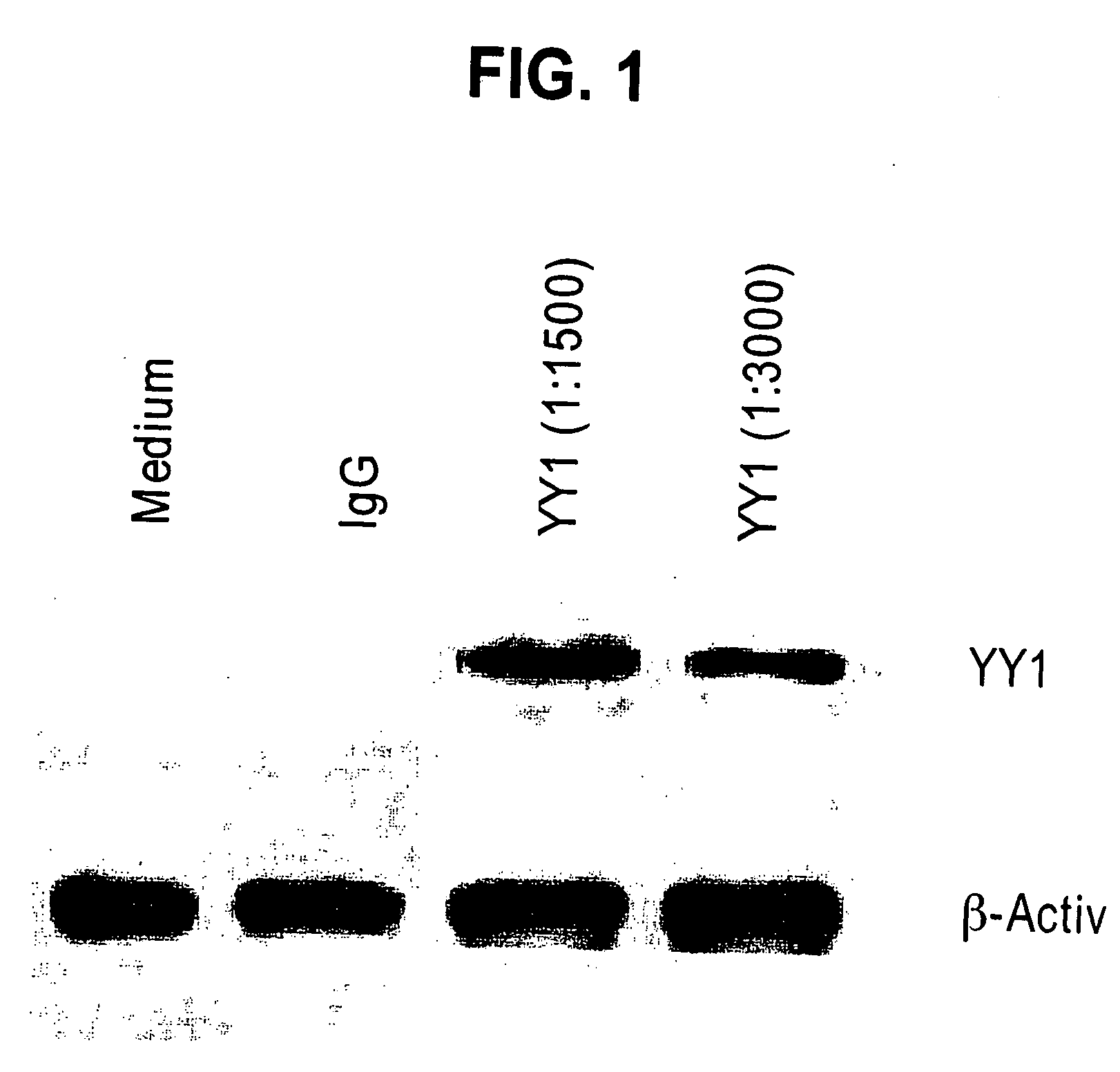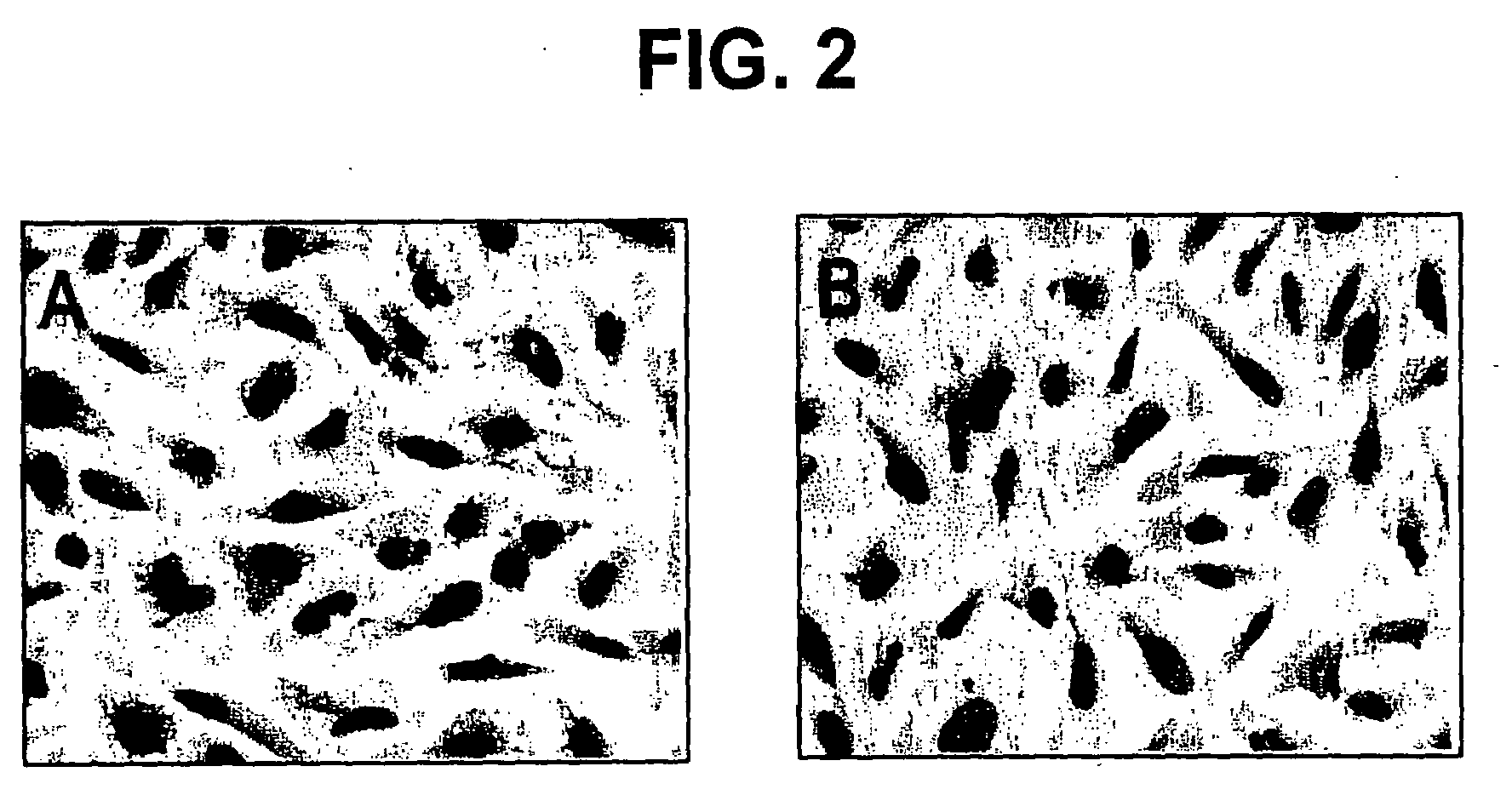Therapeutic and Prognostic Factor Yy1 in Human Cancer
a prognostic factor and human cancer technology, applied in the field of human cancer prognostic factor yy1, can solve the problems of frequent relapse of aggressive androgen independent disease, no consistent curative treatment regimen,
- Summary
- Abstract
- Description
- Claims
- Application Information
AI Technical Summary
Benefits of technology
Problems solved by technology
Method used
Image
Examples
example 1
Overexpression of YY1 in Prostate Cancer Cells
Materials and Methods
Cell Culture and Reagents
[0224]The human androgen-independent PC-3 cell line was originally obtained from the American Type Culture Collection (ATCC, Manassas, Va.). The cell were cultured in RPMI 1640 medium with 10% beat inactivated FBS with antibiotics and the culture was maintained as monolayer on plastic dish and incubated at 37 degrees at a 5% CO2 incubator. The rabbit anti-YY1 antibody and the YY1 peptide were obtained from Geneka, (Montreal, Canada). The antibody was titrated for optimal concentration to be used for both Western and immunohistochemistry. The specificity of the antibody was demonstrated by neutralizing the activity with the YY1 peptide used for immunization. In addition, normal rabbit IgG had no activity (Vector, Burlingame, Calif.). The I actin antibody used in the Western blot was purchased from Chemicon (Temecula, Calif.).
Western Blot Analysis
[0225]PC-3 cells were cultured at a low serum co...
example 2
Overexpression of YY1 in Multiple Myeloma Cancer Cells
[0257]This study investigated the expression of YY1 in multiple myeloma (MM) with the objective of determining whether YY1 plays a role in the progression and drug-resistance of MM. We have initiated these studies by examining nine bone marrow (BM) samples derived from patients with MM. Immunohistochemical studies were performed for the detection and cytoplasmic or nuclear localization of YY1 in the MM cells and also in adjacent normal mature and immature cells. The intensity of staining by the anti-YY1 antibody was scored and the relative intensity was calculated. Two slides from each patient were analyzed and 200 cells per slide were scored. Mean intensities of all samples were calculated and the data were subjected to statistical analysis. YY1 expression in normal BM was low and primarily of cytoplasmic origin. In contrast, YY1 was significantly overexpressed in MM cells. The mean intensity in the MM was approximately three-fo...
example 3
Overexpression of YY1 in Lymphoma Cancer Cells
[0258]We have shown that overexpression of YY1 regulates the resistance of tumor cells to TRAIL-induced apoptosis (Ng and Bonavida, 2002, Molecular Cancer Therapeutics 1:1051-1058, Huerta-Yepez, et al., 2004, Oncogene 23:4993-5003). One mechanism of AIDS-NHL immune escape may be due to overexpression of YY1. Tissue arrays containing formalin fixed, paraffin embedded sections from AIDS lymphoma were obtained from the AIDS and Cancer Specimen Resource (ACSR) of the National Cancer Institute (NCI. These arrays consisted of 21 Burkitt, 29 Large Cell Lymphoma, and 6 Small Cell Lymphoma. Immunohistochemistry was performed for the expression of YY1. The arrays were scored and both the percent of positive cells and the intensity were recorded and the data were analyzed statistically. The findings reveal that YY1 was overexpressed in the majority of the AIDS-NHL patient specimens. In addition, there was a significant correlation between YY1 expre...
PUM
| Property | Measurement | Unit |
|---|---|---|
| molecular weight | aaaaa | aaaaa |
| molecular weight | aaaaa | aaaaa |
| molecular weight | aaaaa | aaaaa |
Abstract
Description
Claims
Application Information
 Login to View More
Login to View More - R&D
- Intellectual Property
- Life Sciences
- Materials
- Tech Scout
- Unparalleled Data Quality
- Higher Quality Content
- 60% Fewer Hallucinations
Browse by: Latest US Patents, China's latest patents, Technical Efficacy Thesaurus, Application Domain, Technology Topic, Popular Technical Reports.
© 2025 PatSnap. All rights reserved.Legal|Privacy policy|Modern Slavery Act Transparency Statement|Sitemap|About US| Contact US: help@patsnap.com



